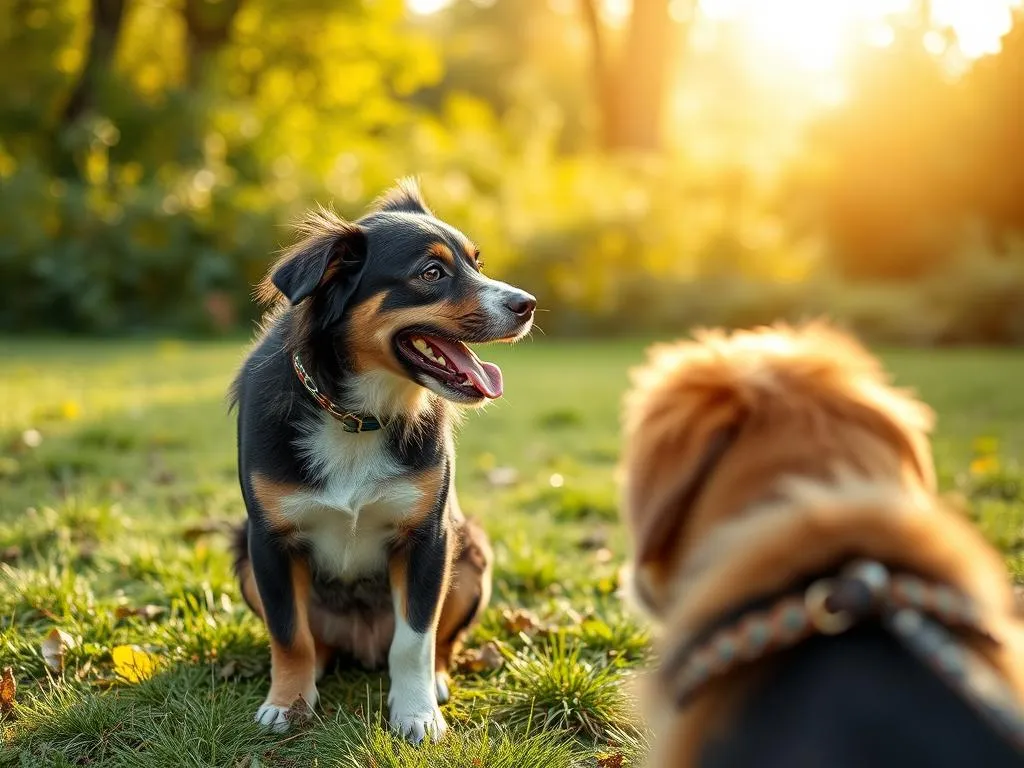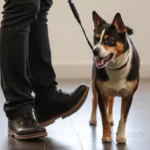
Introduction
Training is a fundamental aspect of responsible dog ownership. It shapes your dog’s behavior, ensuring they become well-adjusted companions. One of the key challenges many dog owners face is their pet’s tendency to react to other dogs. This can manifest as barking, lunging, or pulling on the leash, which may not only be embarrassing but can also pose safety risks. Teaching your dog to ignore other dogs is invaluable—it leads to safer outings and more enjoyable social interactions.
If you’re a dog owner struggling with your pet’s reactivity towards other dogs, you’re not alone. Many dog owners share this challenge. This article aims to provide practical advice and techniques that will help you train your dog to effectively ignore other dogs, ultimately enhancing your walks and social experiences.
Understanding Dog Behavior
Canine Instincts and Socialization
Dogs are inherently social animals. Their instincts drive them to interact with fellow canines, which is often a natural behavior. However, this instinct can sometimes lead to overexcitement or anxiety when they encounter other dogs. Understanding this behavior is crucial for effective training.
Common Triggers for Reactivity
There are several scenarios that can trigger a dog’s reactivity. These may include:
- Leash pulling: When on a leash, some dogs feel constrained and may react aggressively when they see another dog.
- Barking: Barking at other dogs can be a sign of excitement or anxiety.
- Body Language: Growling or stiffening can indicate discomfort or a desire to engage.
Breed-Specific Traits
Certain breeds are more predisposed to reactivity due to their temperament or energy levels. For example, herding breeds may exhibit strong reactions due to their instinctual drive to herd. Understanding your dog’s breed traits can provide insight into their behavior and inform your training approach.
Preparing for Training
Assessing Your Dog’s Behavior
Before diving into training, it’s important to assess your dog’s current behavior around other dogs. Observe their reactions from a distance and note when they become agitated or excited. This baseline will help you measure progress as you train.
Setting Realistic Goals
Establish achievable training objectives based on your dog’s behavior. Instead of aiming for immediate perfection, focus on small milestones—like reducing barking or calm walking past other dogs.
Gathering Necessary Tools
Effective training requires the right tools. Here are some essentials you may need:
- Leashes: A sturdy leash to maintain control.
- Treats: High-value treats for positive reinforcement.
- Clickers: A clicker can help mark desired behavior during training sessions.
Training Techniques
Positive Reinforcement
What is Positive Reinforcement?
Positive reinforcement is a training method that involves rewarding your dog for desired behaviors. This technique is highly effective because it encourages your dog to repeat those behaviors in the future.
How to Implement Positive Reinforcement
- Identify Triggers: Determine what situations cause your dog to react to other dogs.
- Reward Calm Behavior: When you spot another dog, reward your dog for remaining calm. Use treats or praise to reinforce this behavior.
- Practice Regularly: Repeat this process consistently, gradually increasing the difficulty by decreasing the distance to the other dog.
Desensitization
Understanding Desensitization
Desensitization involves gradually exposing your dog to the stimulus that triggers their reactivity—in this case, other dogs—at a level they can handle without reacting.
Step-by-Step Desensitization Process
- Start at a Distance: Begin with a distance where your dog notices the other dog but does not react. This may be several blocks away.
- Gradually Decrease Distance: Over time, with consistent practice, gradually decrease the distance. Reward calm behavior at each stage.
- Increase Difficulty: Once your dog can remain calm at a closer distance, try practicing in busier environments.
Counter-Conditioning
What is Counter-Conditioning?
Counter-conditioning is a technique that changes your dog’s emotional response to other dogs. Instead of viewing them as a threat or source of excitement, you want them to associate other dogs with positive experiences.
Implementing Counter-Conditioning
- Pair Treats with Sight: When your dog sees another dog, immediately give them a treat. This helps create a positive association.
- Vary the Rewards: Use different treats to keep your dog engaged and excited about the presence of other dogs.
- Monitor Progress: Keep track of your dog’s responses and adjust the distance or reward system as needed.
Focus and Attention Training
Training Your Dog to Focus on You
Enhancing your dog’s focus is crucial in training them to ignore other dogs. This involves teaching your dog to respond to your commands and pay attention to you rather than distractions.
Games and Exercises to Build Focus
- Name Game: Call your dog’s name and reward them when they look at you.
- Watch Me Command: Teach your dog to maintain eye contact with you. Use treats to encourage them to focus on you when other dogs are present.
- Engagement Games: Use toys or games to keep your dog’s attention on you during walks.
Practicing Good Leash Manners
Importance of Leash Control
Good leash manners are vital for preventing reactivity. A well-controlled leash can help you maintain your dog’s focus and prevent them from lunging or barking at other dogs.
Techniques for Improving Leash Manners
- Loose Leash Walking: Train your dog to walk beside you on a loose leash. Reward them for staying close and not pulling.
- Change Direction: If your dog starts to react, change direction. This can redirect their focus back to you.
- Frequent Breaks: Allow your dog time to relax and refocus during walks. Stop and reward them for calm behavior.
Socialization and Controlled Exposure
Importance of Socialization
Socialization is crucial for a well-adjusted dog. It helps them learn how to behave around other dogs and reduces anxiety.
How to Safely Introduce Your Dog to Other Dogs
- Controlled Meet-ups: Arrange controlled meet-ups with well-behaved dogs. Use a neutral location and keep leashes on.
- Observe Body Language: Pay attention to your dog’s body language and that of the other dog to ensure both are comfortable.
- Gradual Introduction: Start with brief interactions and gradually increase the time spent together as both dogs become more comfortable.
Consistency and Patience
The Role of Consistency in Training
Consistency is key in dog training. Regular practice with the same commands and techniques reinforces learning and helps your dog understand what is expected.
Understanding the Time Commitment
Training takes time, and progress may not always be linear. Prepare yourself for a commitment and be patient with your dog as they learn. Understand that setbacks may occur, and be ready to adapt your approach as needed.
Troubleshooting Common Issues
Dealing with Setbacks
Even with the best training, you may encounter setbacks. If your dog reacts despite your training efforts, stay calm and reassess the situation. Identify any triggers that may have caused the reaction and adjust your training accordingly.
When to Seek Professional Help
If your dog’s reactivity remains a significant issue, consider consulting a professional dog trainer. Signs that you may need help include:
- Persistent aggression or anxiety.
- Inability to make progress despite consistent training.
- Concerns about safety for your dog or others.
Conclusion
Training your dog to ignore other dogs is a journey that requires dedication and understanding. By implementing techniques such as positive reinforcement, desensitization, and focus training, you can significantly improve your dog’s behavior around other dogs.
Remember, consistency and patience are your best allies in this process. Celebrate small victories and stay motivated. The benefits of a well-trained dog—safer walks, more enjoyable outings, and a happier life together—are well worth the effort.
Encourage yourself to start applying these techniques today and share your experiences. Your commitment to your dog’s training is a step towards a brighter future for both of you.
FAQs
What should I do if my dog reacts aggressively to other dogs?
If your dog reacts aggressively, try to remove them from the situation calmly. Use your training techniques to refocus their attention on you. If aggressive behavior persists, seek professional help.
How long will it take to train my dog to ignore other dogs?
The timeline varies based on your dog’s personality and history. Some dogs may show improvement in weeks, while others may take several months.
Can I train my dog to ignore other dogs off-leash?
It’s best to train dogs to ignore other dogs on a leash first. Once they demonstrate reliable behavior on a leash, you can gradually introduce off-leash scenarios in safe, controlled environments.
Are certain breeds harder to train to ignore other dogs?
Yes, some breeds with strong instinctual drives, such as herding or hunting breeds, may be more challenging. However, with patience and the right techniques, all dogs can learn to ignore other dogs effectively.









